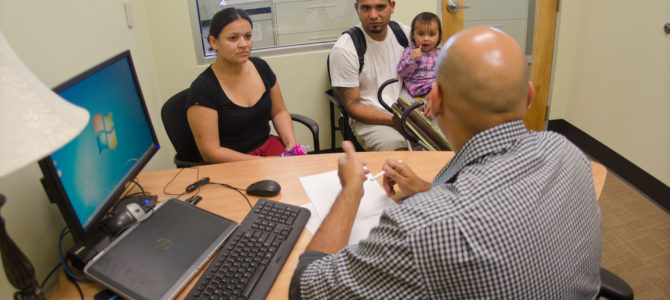
There’s often a disconnect between Washington and the rest of the country, and Medicaid reform is no exception. The House of Representatives last month passed a bill including major Medicaid reforms—either a per capita spending cap or a block grant for states. The new presidential administration has pledged its support for added state flexibility for running Medicaid programs.
All that sounds nice, you might be thinking, but what does it mean—both for states, and for Medicaid recipients themselves? A recent paper I compiled for the Wyoming Liberty Group provides some sense of what a reformed Medicaid program might look like. The overhaul being contemplated in Washington—the largest in more than half a century—would, if done correctly, give states flexibility to modernize Medicaid and provide better care to patients, which could end up saving taxpayers money.
Reform Means Better, Less Expensive Care
Medicaid reform means better care for patients. It means states can choose the best care options for beneficiaries without worrying about checking bureaucratic boxes. That freedom will allow more elderly and disabled beneficiaries to stay in their homes, rather than moving to nursing institutions—the preferred option for most seniors, and a more economical one.
A series of reforms in Rhode Island begun nearly a decade ago provide some sense of what Medicaid transformation can accomplish. Nonpartisan analysts found that Rhode Island’s reforms saved tens of millions of dollars, while “improving members’ access to more appropriate services.” Providing better care not only represents good policy—it can also save taxpayers money.
Medicaid reform could mean new efforts to coordinate care. Recent innovations from the private sector—such as payment bundles for all the costs of a procedure—would give providers more incentives to provide effective care the first time, while publicly releasing de-identified patient data would give providers the analytic tools they need to become more efficient.
Medicaid reform also means more consumer-oriented options for patients. It involves giving patients the tools to save money for taxpayers, then sharing some of those savings with them. Whether providing incentives for healthy behaviors—similar to the “Safeway model” popular with many large employers—or encouraging patients to shop around for non-emergency procedures like MRIs, these incentives can present a “win-win” proposition to both patients and taxpayers.
Link Benefits to Contributions
A reformed Medicaid program means providing links to employment, and employment-based health insurance, for eligible beneficiaries. Work requirements and job training programs will encourage individuals to develop translatable skills that will improve their employment prospects, and ultimately benefit the economy. Encouraging patients to accept employment-based insurance wherever offered, and transforming Medicaid so it more closely resembles employer plans, will create smoother transitions for beneficiaries.
Finally, a reformed Medicaid program would serve as a wise steward of taxpayer dollars. Enhanced eligibility checks and increased asset recovery efforts would preserve scarce taxpayer resources for the vulnerable patients who need them most. With improper payments in the program having risen by nearly 25 percent to more than $36 billion last fiscal year, state Medicaid programs need the resources and incentives to ferret out this waste and fraud and return it to taxpayers.
While Medicaid serves an important purpose for the needy populations for which it was designed, the program needs updating to respond to twenty-first-century medicine. Moreover, with the size of Medicaid nearly tripling as a percentage of state budgets over the past three decades, an unreformed Medicaid program will continue to crowd out other important state spending priorities like law enforcement, education, and transportation.
Medicaid reform may well take different forms in different states. Wyoming’s large rural population impacts its health system in numerous ways. Managed care has yet to come to Medicaid, and social isolation in rural communities helps explain why Wyoming has an above-average percentage of aged beneficiaries in nursing homes. These unique characteristics mean that the solutions that work for Medicaid recipients in Cheyenne may not work for those in Charlotte, and vice versa.
But given freedom from Washington—freedom that should be forthcoming under the new administration—every state can transform its Medicaid program. All it takes is federal flexibility, and for policy-makers to embrace a vision for a modern Medicaid system. With a comprehensive waiver, Wyoming—and every other state—can transform and revitalize Medicaid. It’s time to embrace the opportunity and do just that.









